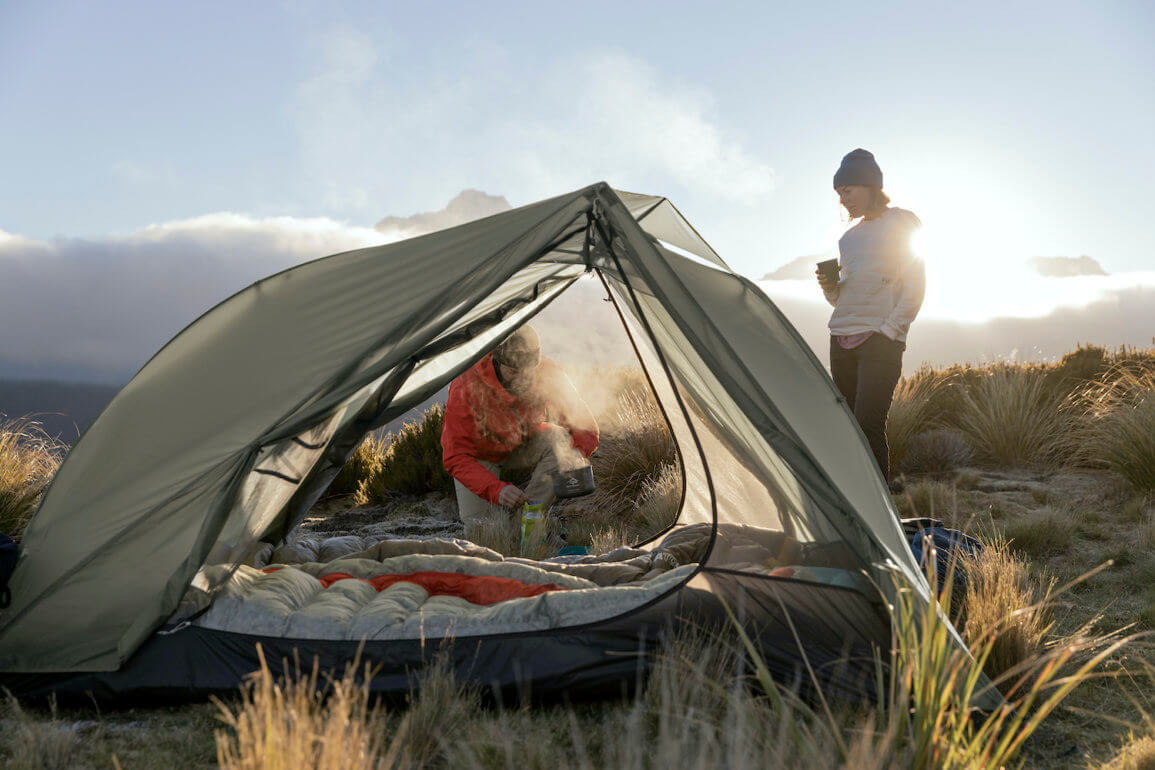Sea to Summit has launched a new line of ultralight, technical backcountry tents. The tents are loaded with innovative new features, including a pole structure that increases interior height and volume for improved livability.
The new tent models, the Alto and the Telos, include 1-person, 2-person, and 3-person models.
While both the Alto and Telos tents are ultralight, the Alto shaves a bit of weight by using a semi-freestanding pole structure. The Telos pole structure results in a freestanding tent. For a quick look at the trail weights, the 2-person Alto weighs in at 2 lbs 9 oz while the 2-person Telos weighs 3 lbs 4 oz.
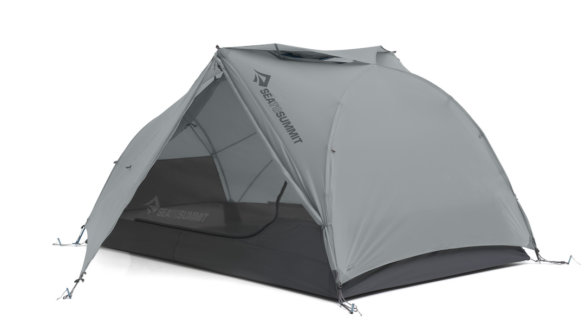
Update: The Alto and Telos Tents are back in stock at Sea to Summit!
Exciting Innovations
Sea to Summit is an Australian-based outdoor gear company with a reputation for creating high-quality, lightweight gear. In fact, the Sea to Summit Ether Light XT Insulated Air Sleeping Mat is one of my all-time favorite air mattresses (check out our Ether Light XT review here).
When Sea to Summit first reached out with the announcement of their new backcountry tents, I was pleasantly curious. I was mostly interested in the weight and materials — where would the new Alto and Telos tents compete in the backpacking tent world?
What really caught my attention, however, wasn’t the weight — it was the company’s new ‘Tension Ridge’ architecture.
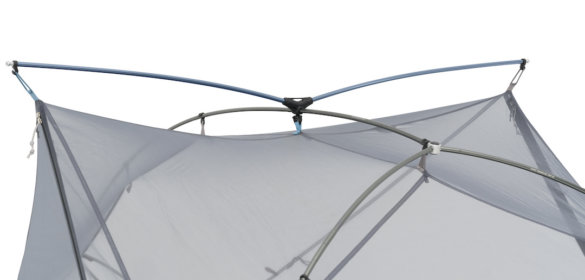
Many backpacking tents include a brow pole that extends over the middle of the tent. These short poles help maintain the shape of the interior and provide support for the doors and vestibules. In other tents, these poles tend to rest on the ridge of the tent and bend downward.
The Sea to Summit Tension Ridge, on the other hand, defies gravity and arcs upward. Why is this a big deal?
The Tension Ridge design increases the side height of the Alto and Telos tents, which in turn increases the door height. This surprisingly innovative change boosts interior volume, which enhances interior livability. Better yet, Sea to Summit reports that entry and exit is also much improved, especially for larger outdoor adventurers (like me).
The Fly Clip System Is Subtle But Awesome
If you’re like me, you appreciate a full-mesh interior tent that lets you sleep without the rainfly. More likely, you’ll leave the rainfly half deployed so you can gaze at the stars and just enjoy the backcountry air. But as it often happens in the mountains, a late-night rainstorm rolls in. With a freestanding tent, you can simply pull the rain fly back down and clip it into place at each corner.
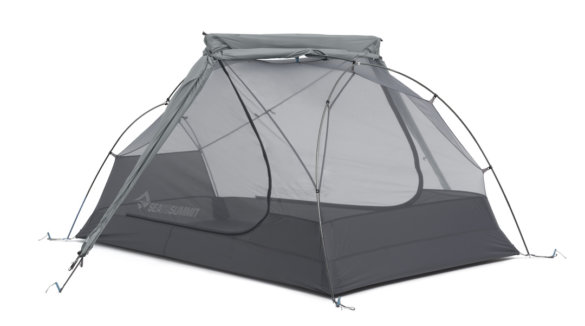
This does, however, mean that you end up fumbling with the clips one-handed as you try to get them connected if you attempt to stay inside your tent . . . or you end up hanging half out of your tent with an elbow in the dirt so you can use two hands to get the job done.
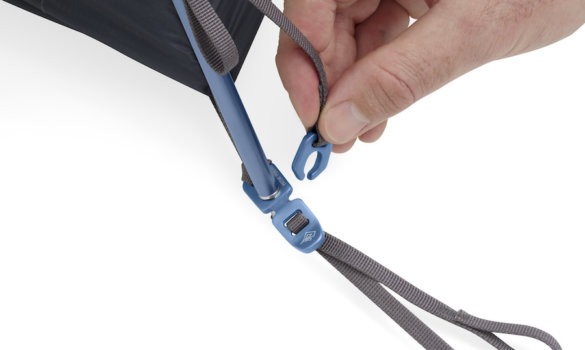
The Alto and Telos ‘quick connect tent feet’ are made from aluminum and the shape lets you attach the clips with one hand, which means you should be able to redeploy the rainfly without exiting the tent. So cool.
Shop the new Alto and Telos tents at Sea to Summit and get FREE shipping on orders over $50!
Attention to Detail
Sea to Summit is proud of its venting system, which includes ‘Apex Vents’ at the top of the rainfly and an adjustment to the vestibule rainfly, which creates a ‘Baseline Vent.’ The result, Sea to Summit reports, is much improved airflow. If you’re spending a lot of time in humid and constantly raining environments, you’ll like this feature.
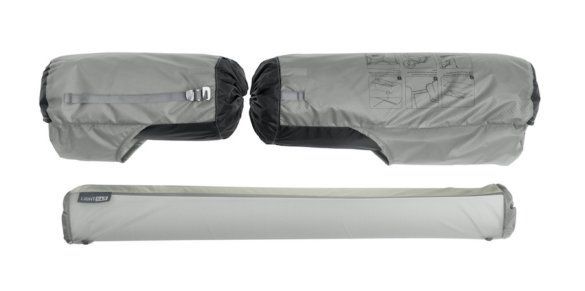
Here is another example of attention to detail: The stuff sack comes in three pieces to make it easier to share the weight of the tent among backpacking buddies. One sack holds the fly, the other the tent body, and the third holds the poles. But get this: The stuff sacks clip into the corners of the tents, creating handy storage buckets.
Meanwhile, the pole sack is made from a light-diffusing material and clips to the ceiling of the tent. If you add a headlamp to the sack, you get a lantern-like light bar. Is it a necessary feature? Nope. Might it increase the livability of your night? Yup.
A Hangout Mode?
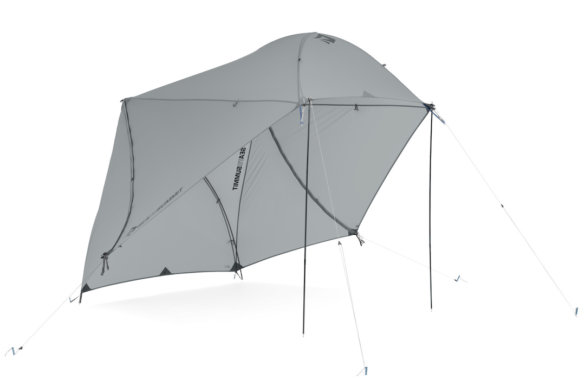
There is one feature that borders on being a gimmick — until you’re in the situation where it’s a game changer. Sea to Summit calls the new feature Hangout Mode. Basically, you can use the poles to set up the rainfly, which is something that you can do with many other freestanding tents with a footprint.
With the Telos tents, however, the design lets the pole structure support the rainfly without a footprint. In addition, you can tilt the rainfly up and use trekking poles to support it. The result is a waterproof sun shade.
It’s the kind of feature that could be handy in full sunshine areas. It could also be great for those times where you’re socked in with rain midday in a place where you don’t want to set up camp — but you would appreciate taking a long lunch break under cover.
Shop the new Alto and Telos tents at Sea to Summit and get FREE shipping on orders over $50!
Ultralight Materials Throughout
Sea to Summit uses DAC aluminum poles, which are outstanding lightweight aluminum poles. So excellent quality there.
The rainfly and floors are very lightweight, too — a 15D nylon for the fly and 20D nylon for the floors. Current ultralight tents on the market use similar fly materials, and they’re pretty great for experienced backpackers and backcountry enthusiasts. The downside is that they’re more fragile than heavier fabrics. What does this mean? It means that our recommendations for ultralight tents is a bit more nuanced than “lighter is always better.”
If you’re on a tight budget and you’re rough with your gear, this class of tent probably isn’t for you. If you can pitch your tent without dragging your fly through the brush and you like to clear pinecones and sticks from the ground before pitching your tent, lighter is awesome.
How to Understand the Models
The Alto tents are semi-freestanding. This means that the main pole system structure has just one center support pole at the head of the tent. The corners are then staked out to provide tension to the system. Sea to Summit offers the Alto in 1-person and 2-person configurations.
The Telos tents are freestanding. This means that the pole system has a pole leg positioned at all four corners and the tent can essentially stand on its own. We like freestanding designs because they are easier to pitch in varied soil conditions. For us, the extra bit of pole weight is usually worth it to get a freestanding tent. The Telos comes in 2-person and 3-person configurations.
It gets more complicated though. Sea to Summit offers two different inner tent options for both the Alto and Telos tents. You can choose a 3-season mesh interior or a 3+ season fabric interior. If you want the extra fabric protection for colder-weather, you would choose the “PLUS” options, as in the Telos TR2 PLUS.
Which is better? Most backpackers should choose the mesh models. Only get the PLUS versions if you plan to spend quite a bit of time out in the colder early spring and late fall months.
Weight
Check the Sea to Summit website for the full specs, but here are the weights for the 2-person Alto and Telos tents with the mesh interior:
Trail weight: 2 lbs 9 oz
Packed weight: 2 lbs 15.68 oz (essentially 3 lbs)
Trail weight: 3 lbs 4 oz
Packed weight: 3 lbs 11 oz
Get the Gear:

